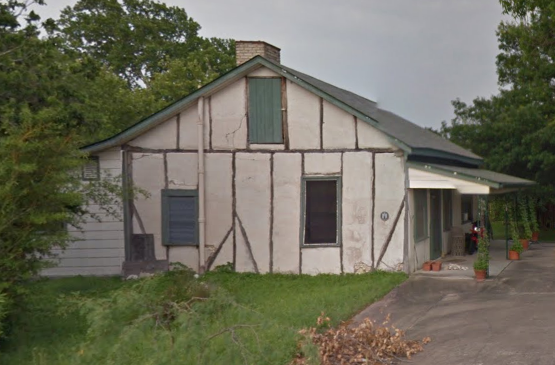One of Austin’s oldest homes needs help
Friday, August 10, 2018 by
Jessi Devenyns At 9019 Parkfield Drive sits one of the oldest structures in the city of Austin. However, as it currently stands, it is easy to pass it by as a teardown.
In partnership with Sam Williams, the 30-year tenant of this property, who was asked to vacate the property by Aug. 2, historian Bill McGarry applied to the Historic Preservation Office to alert it to the neglect and need for preservation.
Edward Zimmerman built the house at 9019 Parkfield in the fachwerk style. It was built in 1854, the same year the first state Capitol building was constructed. According to the application for historic designation of this property – it was granted historic zoning by City Council on June 7, 1985 – it is the only fachwerk structure in Travis County.
The home is part of historic Fiskville, which is now North Austin between Kramer Lane and Metric Boulevard, and was settled by pioneers in the early 1870s.
“The current owner, Phyllis Fletcher, has put it up for sale and is actively making a dire situation worse. She recently added stucco to an already failing west wall. For over 20 years, that wall has been moving, yet nothing has been done to ameliorate it,” McGarry told the Austin Monitor.
Sam Williams told the Monitor that the house was in such disrepair because Fletcher told him “she didn’t want to bother with it.” For years he braced the western wall with boulders to prevent it from collapsing, he said. Since he has vacated the premises, the boulders have been removed.
According to Historic Preservation Officer Steve Sadowsky, however, the timeline is much shorter. “The condition of the cabin has deteriorated very, very quickly,” he said.
Fletcher told the Monitor that the rental agreement between her and Williams included him taking care of the repairs. She explained that she rarely visited the property and was unaware of the state of the home until recently. She also noted that the home is not listed for sale but she is in talks with buyers who have experience with historical properties and “are wanting to restore (9019 Parkfield) back as much as they can.”
To underscore his concern for the state of the structure, McGarry cited a 2017 audit of the Historical Preservation Office in which the Office of the City Auditor concluded that the Planning and Zoning Department “is not effectively administering” the historic preservation program as a possible reason for the lack of communication around this property.
McGarry said he notified the preservation office on July 11 as to the state of the home. He says he has received no response.
“It is on our radar,” Sadowsky told the Monitor.
Currently, there is no demolition permit open on the property. However, McGarry explained to the Monitor that the home is at risk of becoming a “demolition-by-neglect” case. A spokesperson for the Historic Preservation Office told the Monitor that it is planning to bring a demolition-by-neglect permit to the Historic Landmark Commission in the near future. There is no set date.
Demolition by neglect is a process in the city code that’s intended to protect historically important buildings from becoming unsalvageable due to the neglect or inattention of their owners. When this permit is issued, the city sets a timeline for an owner to rehabilitate the structure.
Current photos of the property show a stucco wall that is approximately filling the gaps between the original wooden beams of the structure.
Sadowsky told the Monitor that there are several parties who are interested in purchasing and restoring the property. He would prefer for a private party to restore the building on their own timeline rather than subjecting them to a demolition-by-neglect rescue mission with an “artificial schedule that they can’t keep.”
McGarry noted that the urgency of the situation requires “immediate action.”
“This house is the oldest remnant of the vanished community and deserves preservation treatment as much as possible.”
Photo courtesy of Google Maps.
The Austin Monitor’s work is made possible by donations from the community. Though our reporting covers donors from time to time, we are careful to keep business and editorial efforts separate while maintaining transparency. A complete list of donors is available here, and our code of ethics is explained here.
You're a community leader
And we’re honored you look to us for serious, in-depth news. You know a strong community needs local and dedicated watchdog reporting. We’re here for you and that won’t change. Now will you take the powerful next step and support our nonprofit news organization?








